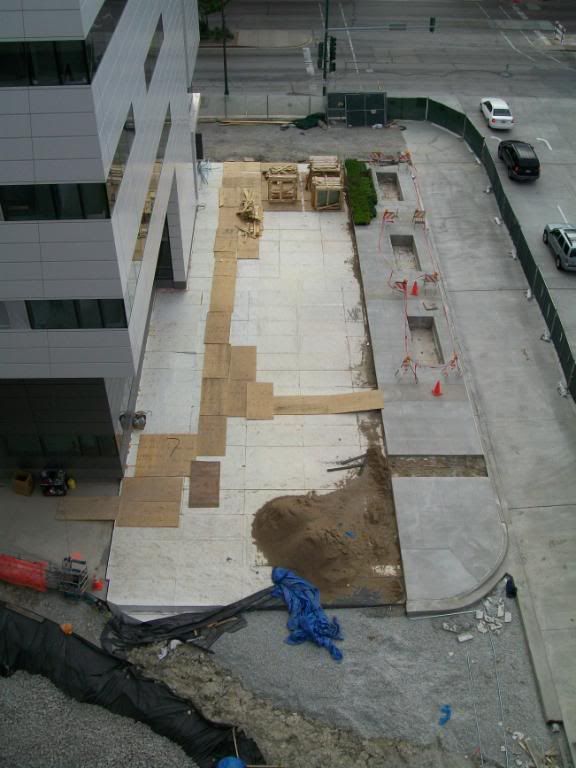Quote:
Originally Posted by J_M_Tungsten

I posted this question on the Rush University Medical Center forum, but was thinking it might get more attention over here. I'm really curious about the integrity of this poly foam stuff (thats the name I found when I did a little research?), it seems like such a brilliant idea. Reduce weight loads while still elevating the terrain! awesome! How will this stuff hold up long term, and how does it interact with plant life ( can tree roots grow into it/ weaken it?)
Does anyone know anything about "poly-foam"? The entire terrain south of the ortho building to the power plant was filled with 7-8ft of these giant white cubes. I imagine that they are put there to reduce the weight load on the connecting tunnel structure below as dirt and rocks would be an enormous amount of weight added with the road over head. I looked into it a little bit and read that a good portion of Millennium Park had used poly-foam for the same reason of weight reduction. Does any one know what this stuff is made of or how much it weighs per cubic ft vs dirt?
You can see more pictures of the road paved over the poly foam at the Rush page on this site.
http://forum.skyscraperpage.com/show...=169510&page=2
 |
Mods: Odd coincidence...someone posted this
http://rankings.big-boards.com/?sort=pageviews&p=4 on another message board that I frequent. I saw this board and was interested because of my line of work, and I signed up. I soon saw JM's question. I am not here to solicit. If this post is inappropriate, please feel free to let me know, or delete it.
I work for a company that manufactures this type of foam. I do not want to violate the T.O.S., but I'll answer your questions generically.
1st, Poly-Foam is a brand name. The industry term is geofoam. You'll have better results googling that term.
As a brief overview, geofoam is expanded polystyrene foam, which is the same type of foam that "styrofoam" cups are made from. (Styrofoam cups aren't actually styrofoam. Styrofoam is a Dow brand name for extruded polystyrene, rather than expanded polystyrene. Anyhoo...)
Expanded polystyrene is very commonly used as insulation, but the purpose in a geofoam application is to serve as a structural fill. As you noted, it adds very little weight, is very strong, and takes up a great deal of space.
Geofoam comes in varying densities, which can weigh from .7lbs cu ft up to more than 3lbs cu ft. Higher density=higher compressive strength. Normal dirt weighs approx. 120-130lbs cu ft.
The geofoam is generally fine with grass and small plants, because the root structure is not deep enough to get to the foam. In the case of larger plants or trees, a root ball is required.
You are correct about Millenium Park. Additionally, the largest geofoam installation in the world is underneath a huge section of I-15 in downtown Salt Lake City.
I'd be happy to answer any other questions that you have.



